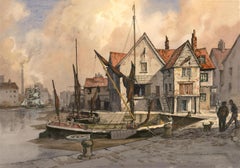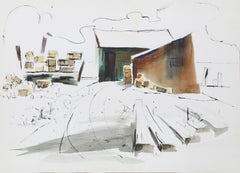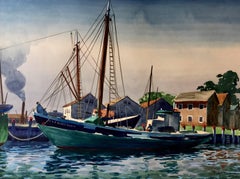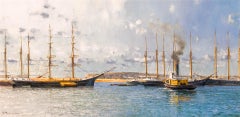Items Similar to The Lumber Wharf
Want more images or videos?
Request additional images or videos from the seller
1 of 12
Gordon GrantThe Lumber Wharf1947
1947
$4,700
£3,568.82
€4,081.21
CA$6,566.58
A$7,303.47
CHF 3,813.65
MX$88,875.49
NOK 48,706.08
SEK 45,677.71
DKK 30,459.66
Shipping
Retrieving quote...The 1stDibs Promise:
Authenticity Guarantee,
Money-Back Guarantee,
24-Hour Cancellation
About the Item
Gordon Hope Grant (1875-1962) created the watercolor entitled “The Lumber Wharf” in circa 1947. It is signed in the lower left 1 inch above the paper edge. The watercolor paper size is 15 x 22 3/8 inches. There is paper tape along the paper edges – no wider than .25 inches. The tape was added by the artist to hold the watercolor paper to a board during the painting process. Minor mat line. Good condition with sharp color.
GORDON H. GRANT
(1875-1962
Painter, illustrator, author, and etcher, Gordon Grant was born in San Francisco on June 7, 1875. When he was twelve, his parents, who were from Ireland and Scotland, sent him to school in Scotland. He embarked on a four-month journey on a Glasgow square-rigger, sailing the Atlantic Ocean. During his voyage, he developed a lifelong fascination with the sea and sailing ships.
Grant spent six years in school in the seaport town of Fifeshire, Scotland, where in his free time he drew from the ships. At eighteen he was determined to become an artist and spent the next three years studying at Hearthely and Lambeth Art Schools in London. Upon his return to San Francisco, he joined the art staff of the San Francisco 'Examiner' and a year later joined the staff of the New York 'Sunday World.' His reputation as an illustrator increased, and Harper's Weekly hired him in 1899 to cover the Boer War in South Africa and the revolution in Mexico. Grant was also on the staff of Puck for nine years.
From the start of his career, his artwork included scenes of the sea, ships, and sailors. In 1901 an exhibition was held of his watercolors at the Salmagundi Club in New York. He was also a member of the American Watercolor Society, Society of Illustrators, Allied Artists of America, New York Society of Painters, New York Watercolor Club, and American Federation of Artists. Beginning in the early 1920's he exhibited his marine paintings and watercolors at Grand Central Galleries in New York. He also started making etchings and won first prize at the Chicago Society of Etchers in the early 1930s. From the late 1930s to the beginning of the 1950s his lithographic prints established his reputation as a printmaker. He continued to have annual watercolor exhibitions and produced prints for Associated American Artists. Grant died in 1962.
- Creator:Gordon Grant (1875 - 1962, American)
- Creation Year:1947
- Dimensions:Height: 24 in (60.96 cm)Width: 28 in (71.12 cm)Depth: 0.13 in (3.31 mm)
- Medium:
- Movement & Style:
- Period:
- Framing:Framing Options Available
- Condition:
- Gallery Location:New York, NY
- Reference Number:1stDibs: LU33129516392
Gordon Grant
Born in San Francisco, Gordon Grant is known for his etchings and paintings of marine subjects. He also painted portraits, streets, harbors, beaches and marines, and was an illustrator, whose work included pulp fiction* for Popular Detective magazine in the 1930s. Skilled with watercolor, Grant was honored many times by the American Watercolor Society*. Memberships included the Society of Illustrators*, Salmagundi Club*, Allied Artists of America*, New York Society of Painters, and American Federation of Artists*. At age 13, he was sent to Scotland for schooling, and the four-month sail around Cape Horn remained a permanent influence on his career. He studied art in Heatherly and at the Lambeth School of Art* in London, and then in 1895, he became a staff artist for the San Francisco Examiner. The next year, he took the same type of job for the New York World and covered the Boer War for Harper's Weekly.
About the Seller
4.7
Recognized Seller
These prestigious sellers are industry leaders and represent the highest echelon for item quality and design.
Established in 1898
1stDibs seller since 2015
58 sales on 1stDibs
Typical response time: 23 hours
Associations
International Fine Print Dealers Association
- ShippingRetrieving quote...Shipping from: New York, NY
- Return Policy
Authenticity Guarantee
In the unlikely event there’s an issue with an item’s authenticity, contact us within 1 year for a full refund. DetailsMoney-Back Guarantee
If your item is not as described, is damaged in transit, or does not arrive, contact us within 7 days for a full refund. Details24-Hour Cancellation
You have a 24-hour grace period in which to reconsider your purchase, with no questions asked.Vetted Professional Sellers
Our world-class sellers must adhere to strict standards for service and quality, maintaining the integrity of our listings.Price-Match Guarantee
If you find that a seller listed the same item for a lower price elsewhere, we’ll match it.Trusted Global Delivery
Our best-in-class carrier network provides specialized shipping options worldwide, including custom delivery.More From This Seller
View AllWharf-side
By Richard Florsheim
Located in New York, NY
Richard Florsheim created this color lithograph entitled “Warf-Side” in 1962 in an edition of 60 pieces. This impression is signed and inscribed “Trial Proof” and printed at the Mour...
Category
1960s American Modern Abstract Prints
Materials
Lithograph
Dory Fishermen
By Frederick Cozzens
Located in New York, NY
Dory Fishermen
Frederick Schiller Cozzens created this watercolor entitled “Dory Fishermen” in 1888. This piece is signed in brush, lower left “Fred S. Cozzen...
Category
Late 19th Century Naturalistic Landscape Paintings
Materials
Watercolor
Schooner St. Croix
By Emilio Sanchez
Located in New York, NY
Emilio Sanchez (1921-1999) created the watercolor entitled “Schooner St. Croix” in 1952. This piece is signed in pen at the lower right and titled on the verso. The paper size is 16.88 x 22.25 inches. Stamped on verso "Estate of Emilio Sanchez." Good to very good condition.
“Best known for his architectural paintings and lithographs, Emilio Sanchez (1921-1999) explored the effects of light and shadow to emphasize the abstract geometry of his subjects. His artwork encompasses his Cuban heritage...
Category
1950s American Realist Landscape Drawings and Watercolors
Materials
Watercolor, Graphite
Caribbean Island [untitled].
By Reynolds Beal
Located in New York, NY
The location of this early oil pastel drawing was identified by other pieces from the same drawing book. The oil pastel was a new invention - just on the market in 1921 and it appea...
Category
Early 20th Century American Impressionist Landscape Drawings and Waterco...
Materials
Oil Pastel
$720 Sale Price
20% Off
Urban Series: Promised
By Thomas R. Roese
Located in New York, NY
Contemporary artist Thomas Roese, inspired by the industrial landscape of steel mills, rail yards, architectural details, and urban neighborhoods surrounding him, created a series of...
Category
21st Century and Contemporary American Realist Landscape Drawings and Wa...
Materials
Graphite
Cle Series: Three Rows in the Yard.
By Thomas R. Roese
Located in New York, NY
702 CLE Series: Three Rows in the Yard.
Contemporary artist Thomas Roese, inspired by the industrial landscape of steel mills, rail yards, architectural details, and the urban neigh...
Category
21st Century and Contemporary Photorealist Landscape Drawings and Waterc...
Materials
Acrylic, Color Pencil, Graphite
You May Also Like
Leonard G. Kersley (b.1911) - 1981 Watercolour, Old Time Wharves
Located in Corsham, GB
An excellent watercolour study depicting an early 20th-century harbour with sailing boats and crooked houses. Inscribed with the location on the reverse. With the artist's stamp to t...
Category
1980s Figurative Drawings and Watercolors
Materials
Watercolor
$227 Sale Price
20% Off
Lumber Yard Study, Impressionist Watercolor by Eve Nethercott
By Eve Nethercott
Located in Long Island City, NY
Eve Nethercott, American (1925 - 2015) - Lumber Yard Study (P2.56), Year: circa 1960, Medium: Watercolor on Paper, Image Size: 10.5 x 14.5 inches, Size: 11 x 15 in. (27.94 x ...
Category
1960s Impressionist Landscape Drawings and Watercolors
Materials
Watercolor
"S.S. Blackman at Dock"
By Joseph DiGemma
Located in Southampton, NY
Exhibited original watercolor on paper painting by American artist, Joseph DiGemma. Signed lower right and dated 1949. Overall framed and matted (white) in natural maple frame 26 by 32 inches. Exhibition label verso: "Shared Aesthetic, Artists of Long Island North Fork, 2009". From the estate of Countess Consuelo Crespi.
Joseph Paul DiGemma was born in New York City and studied at the Pratt Institute and the Arts Students League. His engravings are in the collections of the Metropolitan Museum of Art, the Brooklyn Museum and the Astor-Lenox Collection. Several of his wartime paintings...
Category
1940s American Realist Landscape Drawings and Watercolors
Materials
Watercolor, Paper
$1,100 Sale Price
38% Off
Bark HESPER Unloading Lumber at San Diego
Located in Costa Mesa, CA
This bright and serene scene of ships unloading off San Diego, California features a ship with a less than quiet history. The painting shows a typically bright and sunny Southern California day, the deep blue waters of San Diego providing the perfect backdrop for unloading crucial lumber for construction. The painting has Thimgan's eye for detail including the historic ship he's depicted, surely with a knowledge of her history, and his ability to so perfectly depict California's coastal landscape and surrounding waters.
Some ships of legend get their reputations not for speed or daring rescues, but for the amount of chaos which happens onboard. Sailors, being generally a superstitious lot, could spread a ship's reputation like wildfire. As with the supposedly haunted places on land, the odd instances become larger tales whispered over strong drink in port or at worst, printed in bold newspaper headlines. The best crews don't want to serve aboard such vessels, so only the most hardened men sign on. Tempers flare and conditions deteriorate. Over time a ship gains the nickname of "hell ship" or "blood ship." This was the fate of the Bark HESPER.
HESPER was purpose built in 1882 for the Pacific "Triangle Trade" - carrying lumber to Australia, coal to Hawaii and sugar to California, though she took on other cargoes in her career. The wooden bark of 603 tons was built by the Halls Brothers...
Category
Early 2000s Photorealist Paintings
Materials
Canvas, Oil
New England Harbor Dock Scene with Boat by Bernard Corey
By Bernard Corey
Located in Rockport, MA
In Dock Scene, American artist Bernard Corey captures the quiet beauty of a New England harbor. Corey's loose, expressive brushwork and earthy tones reflect the hallmarks of American...
Category
20th Century American Impressionist Landscape Paintings
Materials
Oil
Abandoned Wharf
Located in Los Angeles, CA
This drawing is part of our exhibition Charles Goeller: A Wistful Loneliness.
Crayon on paper, 20 x 12 (image), 22 x 14 inches (sheet), Signed lower right, Matted, but not framed
Ex...
Category
1940s American Modern Landscape Drawings and Watercolors
Materials
Crayon, Paper
More Ways To Browse
African Harp
Painting Scottish Irish
Harpers Weekly
Marine Sailing Ships
Marine Art Scottish
Still Life Of Italy
Bright Abstract Painting
A Silver Artist Paintings
Window Frames Used
C Inness Oil Paintings
1949 Paintings
Plane Plane
Unsigned Painting
Original Art Spain
Art Auctions
Blue Abstract Oil Painting
City Street Painting
Painted Wood Sculpture
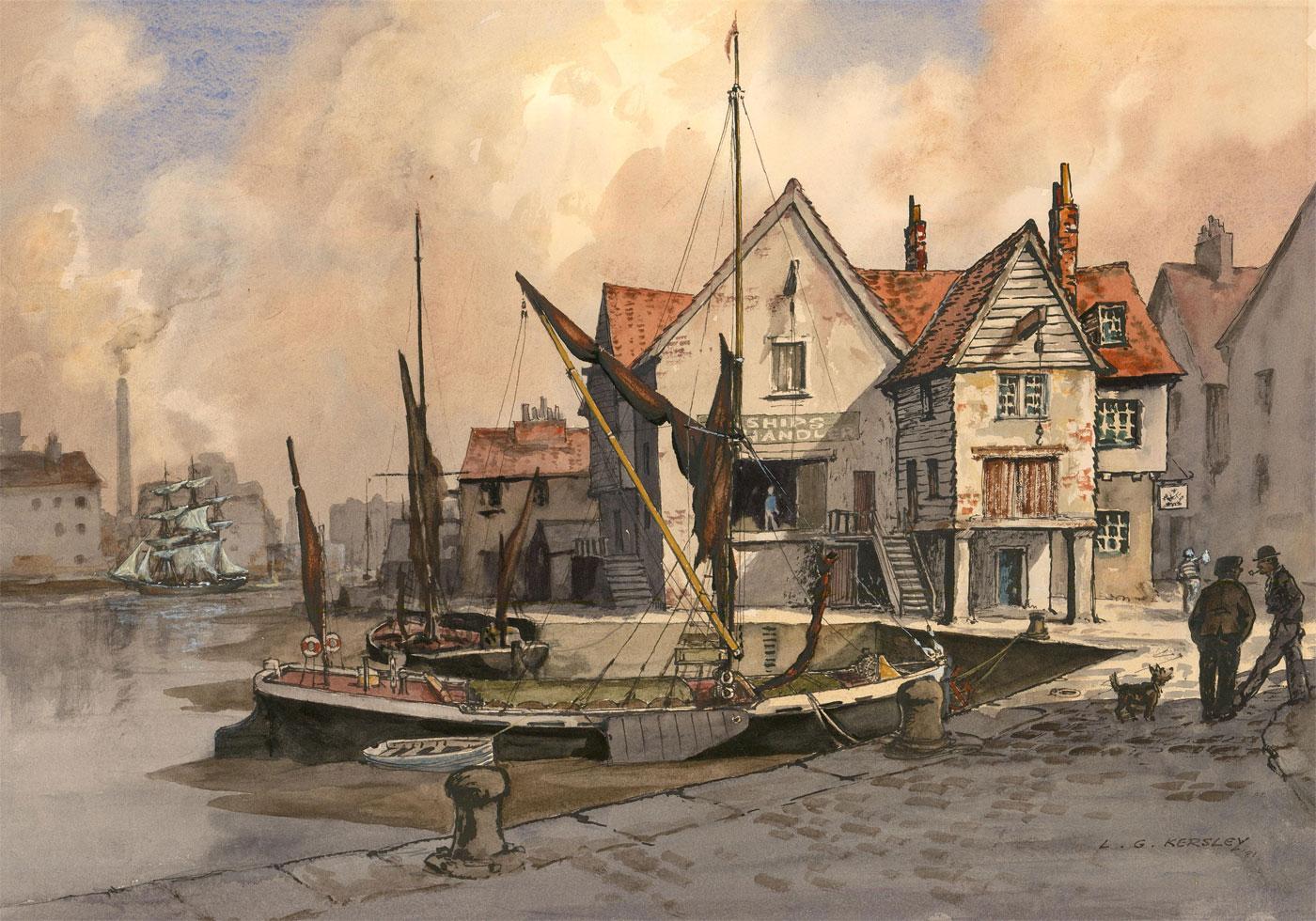
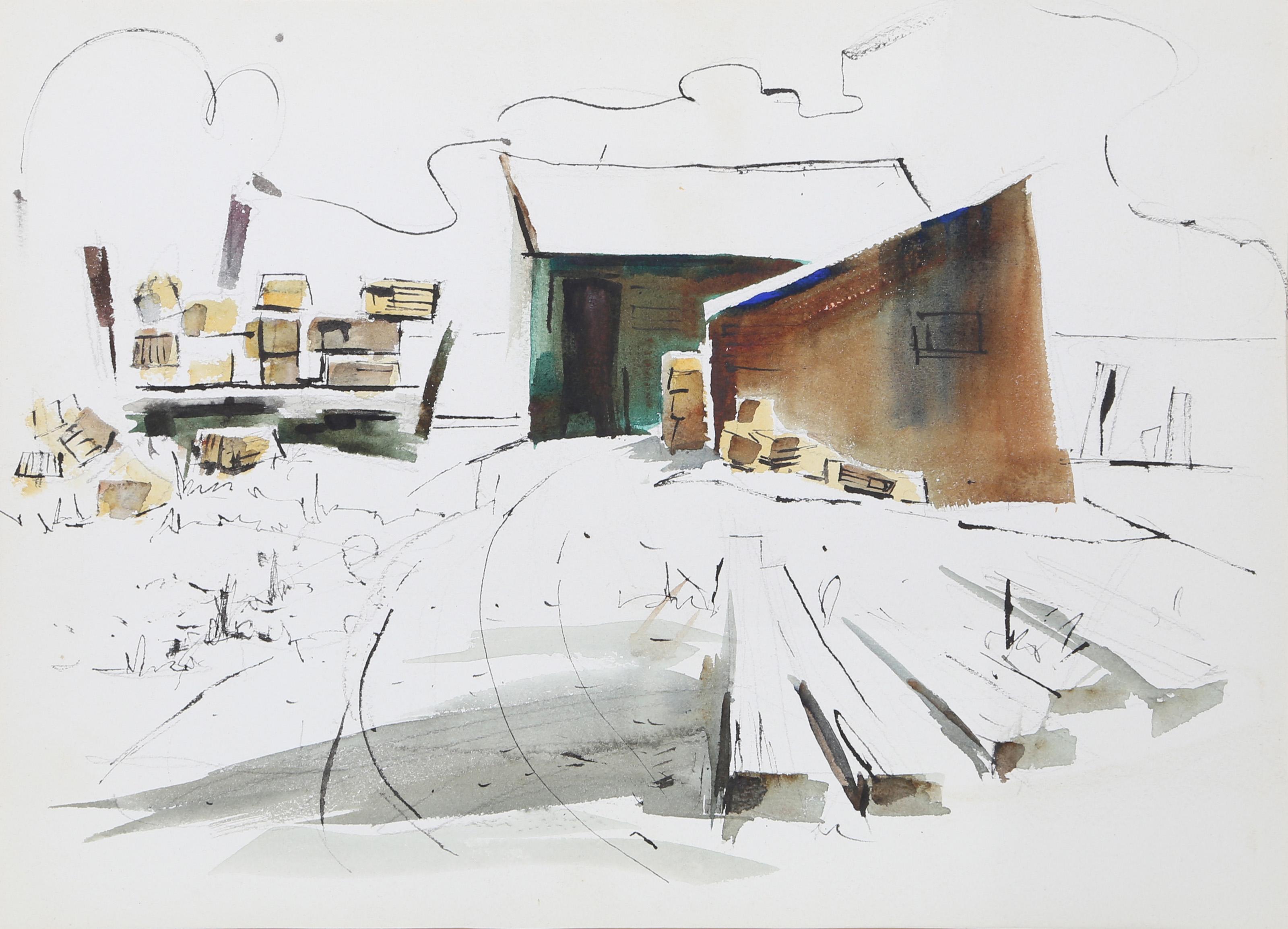
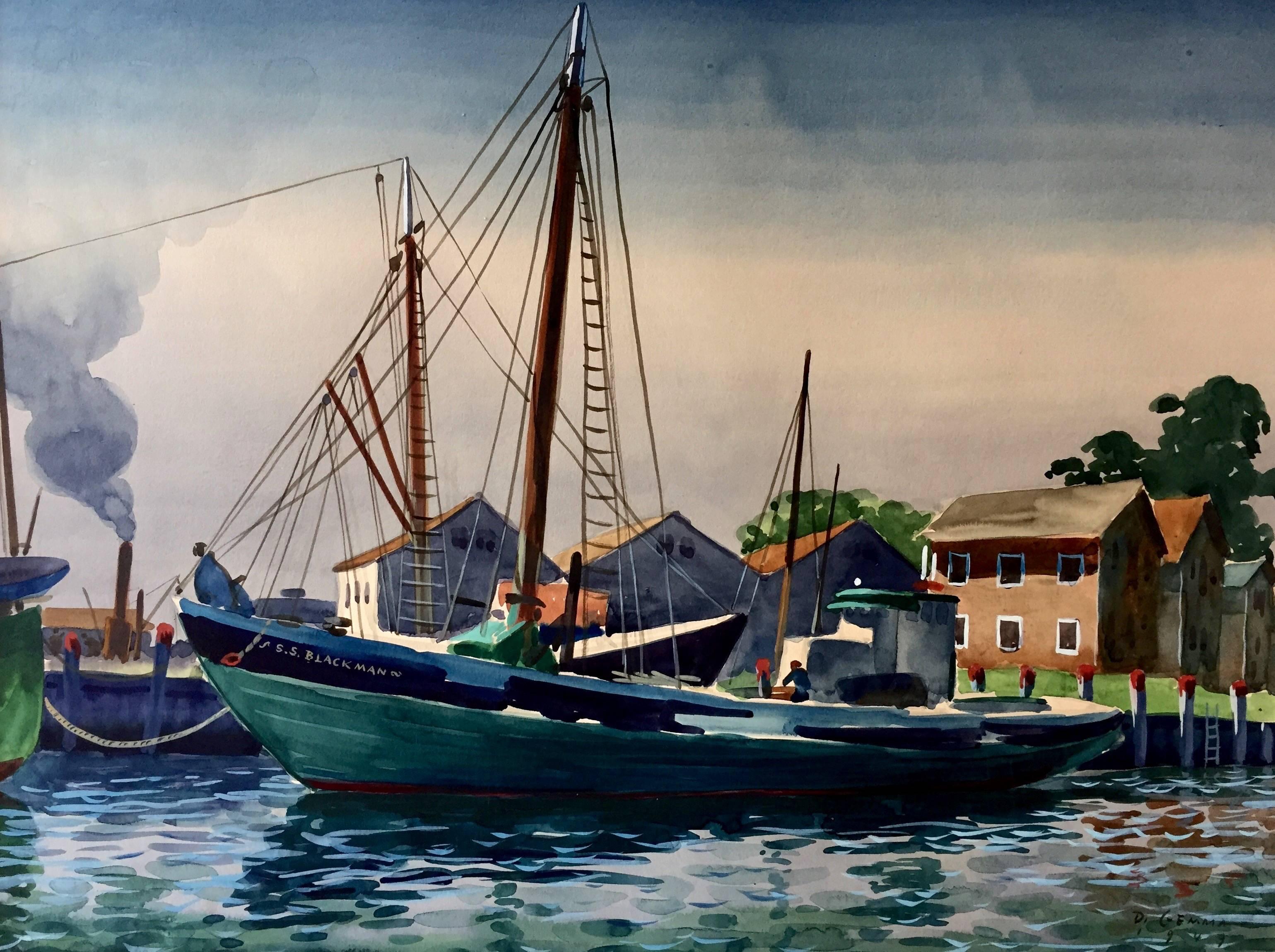
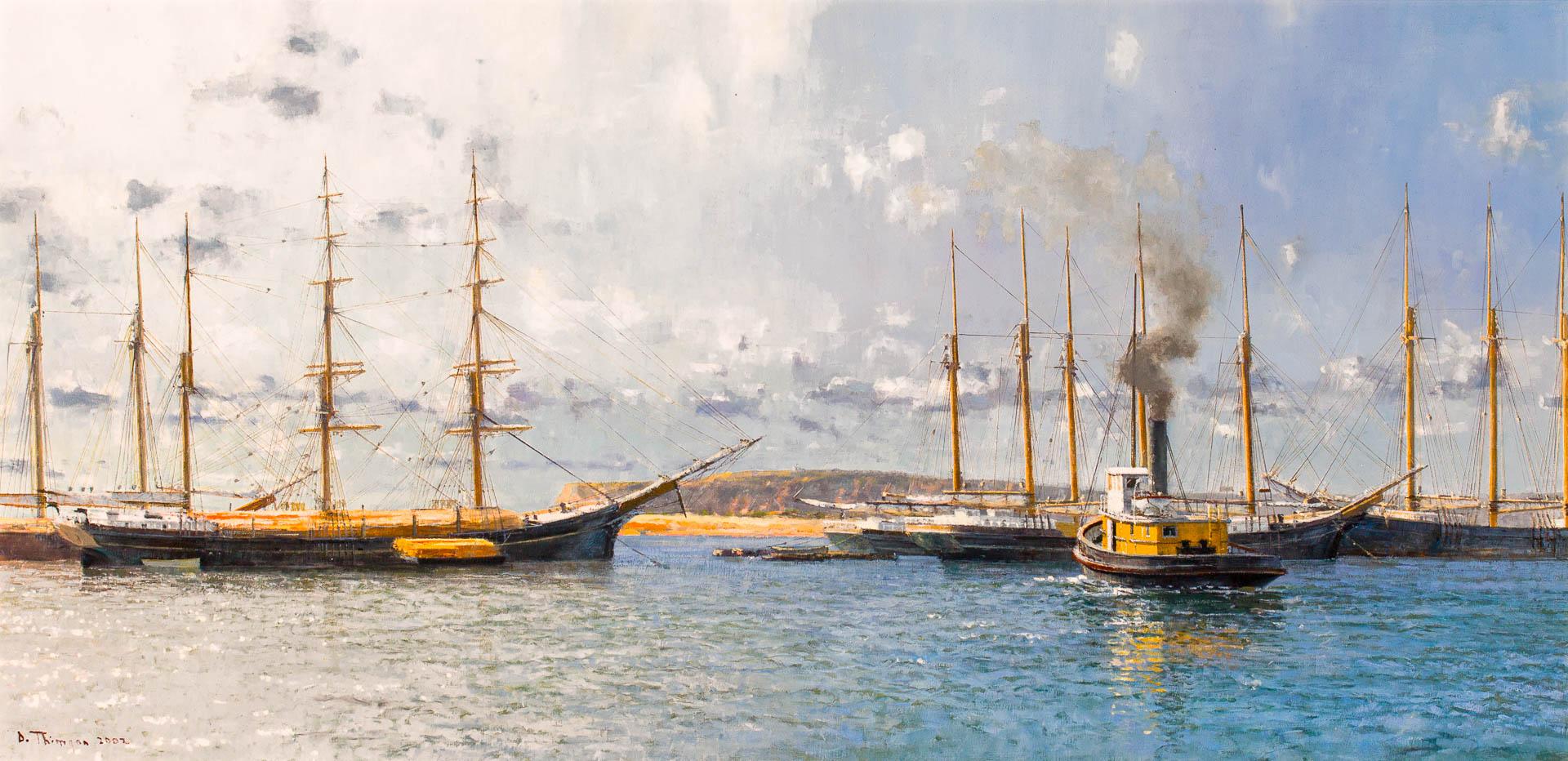
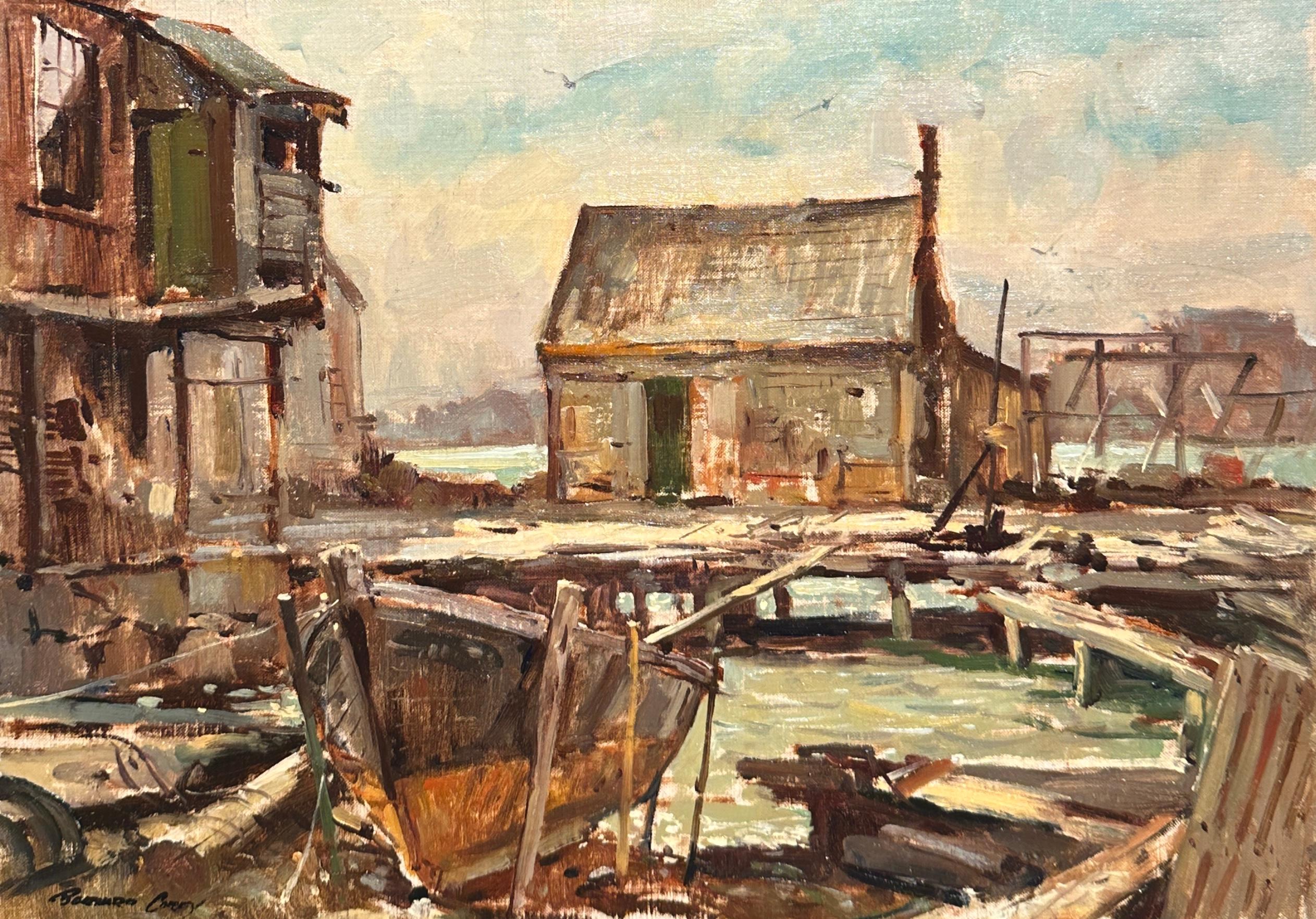
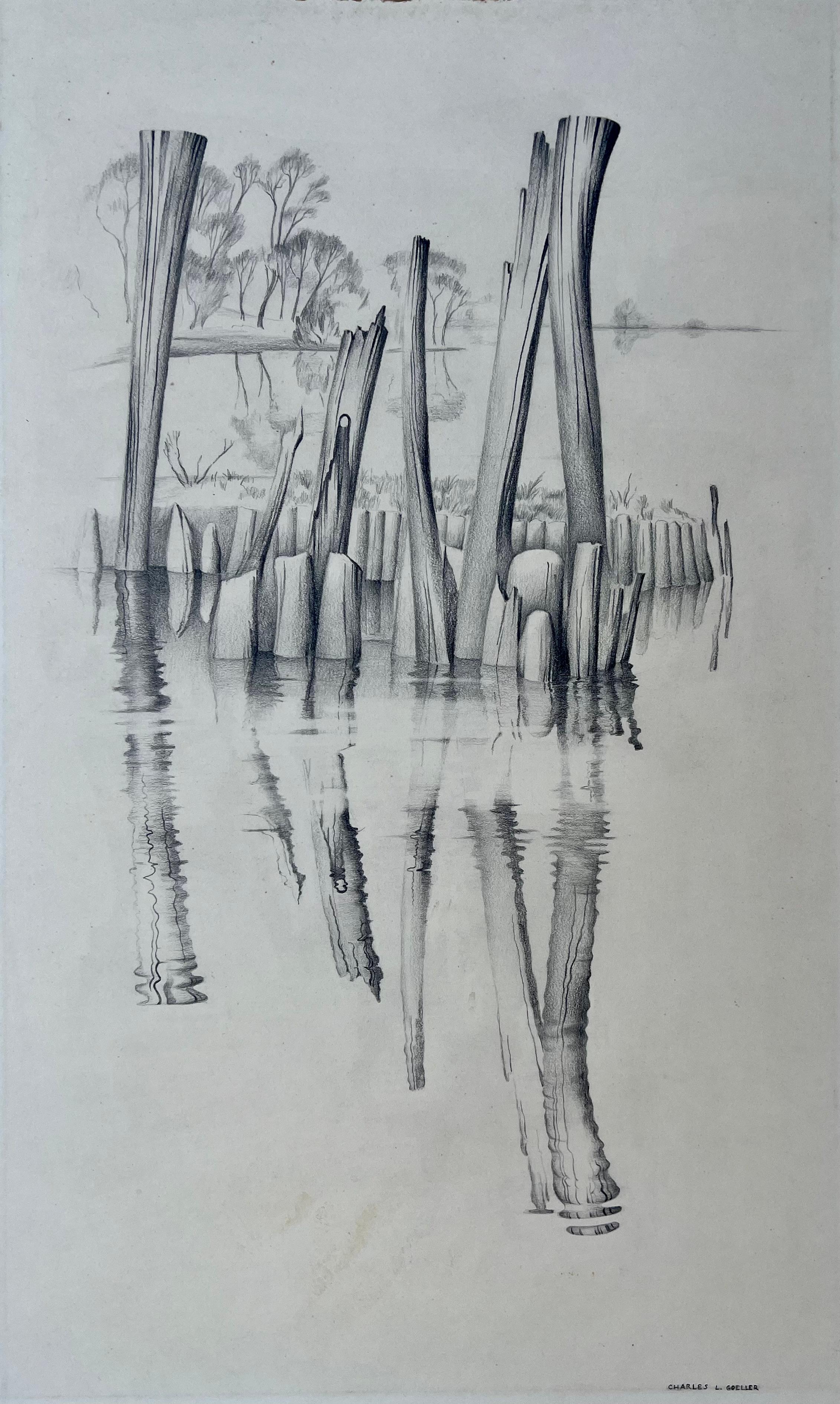
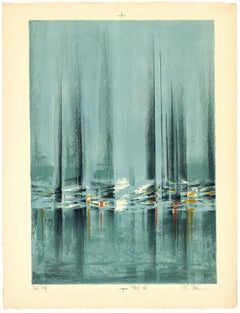
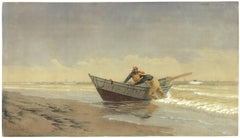
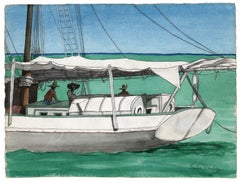
![Caribbean Island [untitled].](https://a.1stdibscdn.com/archivesE/upload/a_3312/1494618712916/85973_master.jpg?width=240)
